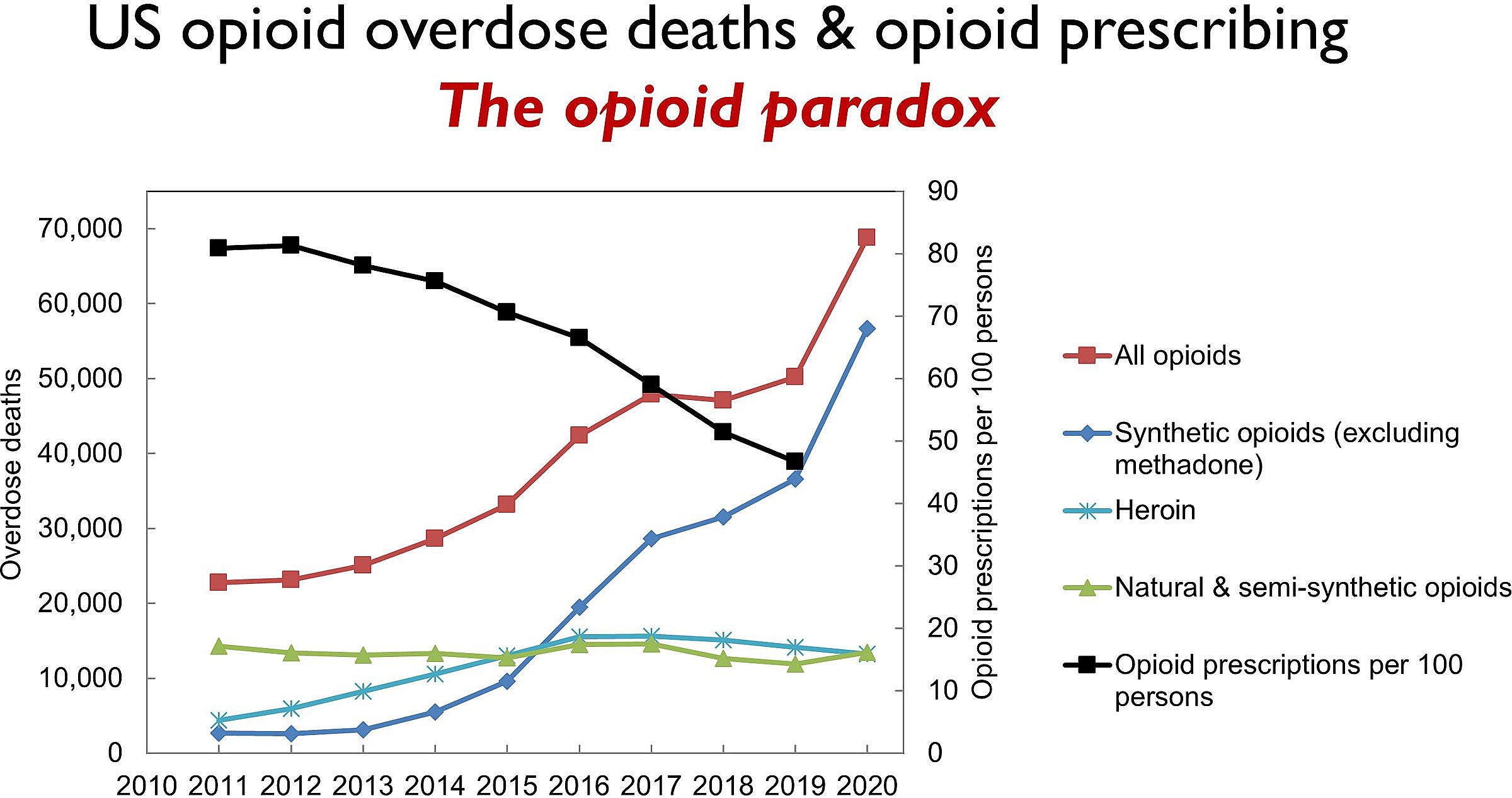Few Fatal Overdoses Found in Rx Opioid Study
/By Pat Anson, PNN Editor
The odds of having an overdose are relatively small for most people after getting their first opioid prescription, but are significantly higher if patients are over age 75, insured by Medicaid or Medicare, and have a history of depression or substance use disorders, according to a large new study.
Researchers analyzed health claims for nearly 237,000 opioid “naïve” patients in Oregon from 2013 to 2018, and found that about 3 in 1,000 (0.3%) experienced an overdose within three years of their first prescription. The vast majority of the 667 reported overdoses were non-fatal, and researchers could not determine if they involved illicit opioids or the opioids that patients were prescribed.
“There were relative few fatal overdoses - I believe it was less than 100. So we didn't look further than that because there wasn't statistical power,” said lead author Scott Weiner, MD, an emergency physician at Brigham and Women’s Hospital in Boston. “Unfortunately, it is not possible to ascertain if the overdose was from illicit or prescribed opioids from the data.”
One of the more surprising aspects of the study is that there was little association found between overdoses and high dose prescriptions. The CDC says opioids prescribed at daily doses that exceed 90 MME (morphine milligram equivalent) raise the risk of overdose, but Weiner and his colleagues found little evidence to support that.
“Incidence of overdose was not associated with varying levels of MME that were received in the first 6 months, which may indicate that patient factors may be more important than the strength of the opioids prescribed. These are both novel findings,” researchers reported in in JAMA Network Open.
The research team did find a higher risk of overdose when patients were prescribed long-acting opioids such as oxycodone, or used opioids concurrently with benzodiazepines, a class of anti-anxiety medication.
Patients in the study who refilled an opioid prescription 6 or more times also had a higher overdose risk, as did those who got refills from three or more pharmacies.
Patients with alcohol or substance use disorders had the highest risk of overdose, as did those with a history of depression or psychosis.
Medicaid, Medicare and Elderly Patients at High Risk
Another high risk factor associated with overdose is insurance coverage. Patients covered by Medicaid had an overdose risk almost four times higher than those covered by a private insurer, while those insured by Medicare Advantage had an overdose risk nearly 8 times higher than commercially insured patients.
The finding that patients over age 75 had an overdose risk nearly three times higher than other age groups is not surprising, according to one pain management expert.
“Obviously, this older age group has more comorbidities which is also associated with increased risk,” said Lynn Webster, MD, past president of the American Academy of Pain Medicine. “What we don’t know is why opioids were prescribed and if severity of pain or suicidality or denial to prescribe opioids for severe pain could be contributing factors for the higher risk of overdose with elderly patients.”
Weiner cautioned doctors against taking the findings too literally. For example, although African-Americans were found to have a higher risk of overdose compared to white patients, they make up only a small percentage of Oregon’s population, making the data for them statistically weak.
“I absolutely do not advocate for suboptimal pain control for any patient, regardless of their risk profile. However, I do want prescribers to be careful when prescribing opioids to any previously naive patient, and to be extra careful when prescribing to the higher risk groups,” Weiner told PNN in an email.
“For patients in the higher risk groups, particularly those with diagnosis of substance use disorders, I would counsel the patient and inform them of their elevated risk and come up with a game plan for safety. I am only unwilling to prescribe to anyone when I don't believe an opioid is indicated for their condition.”










